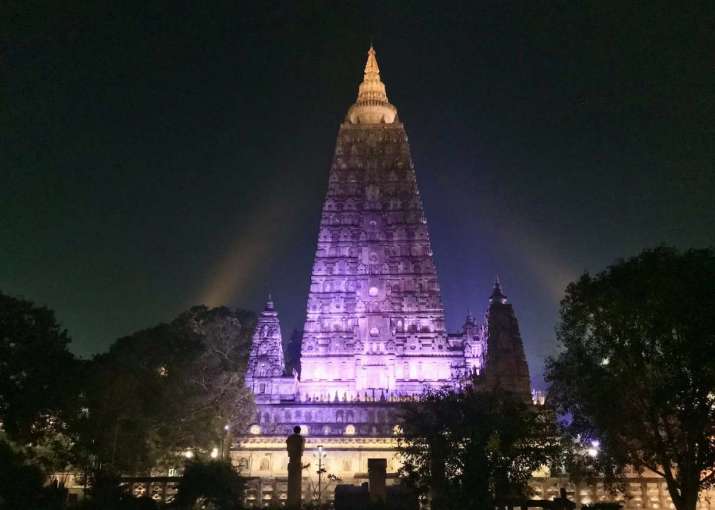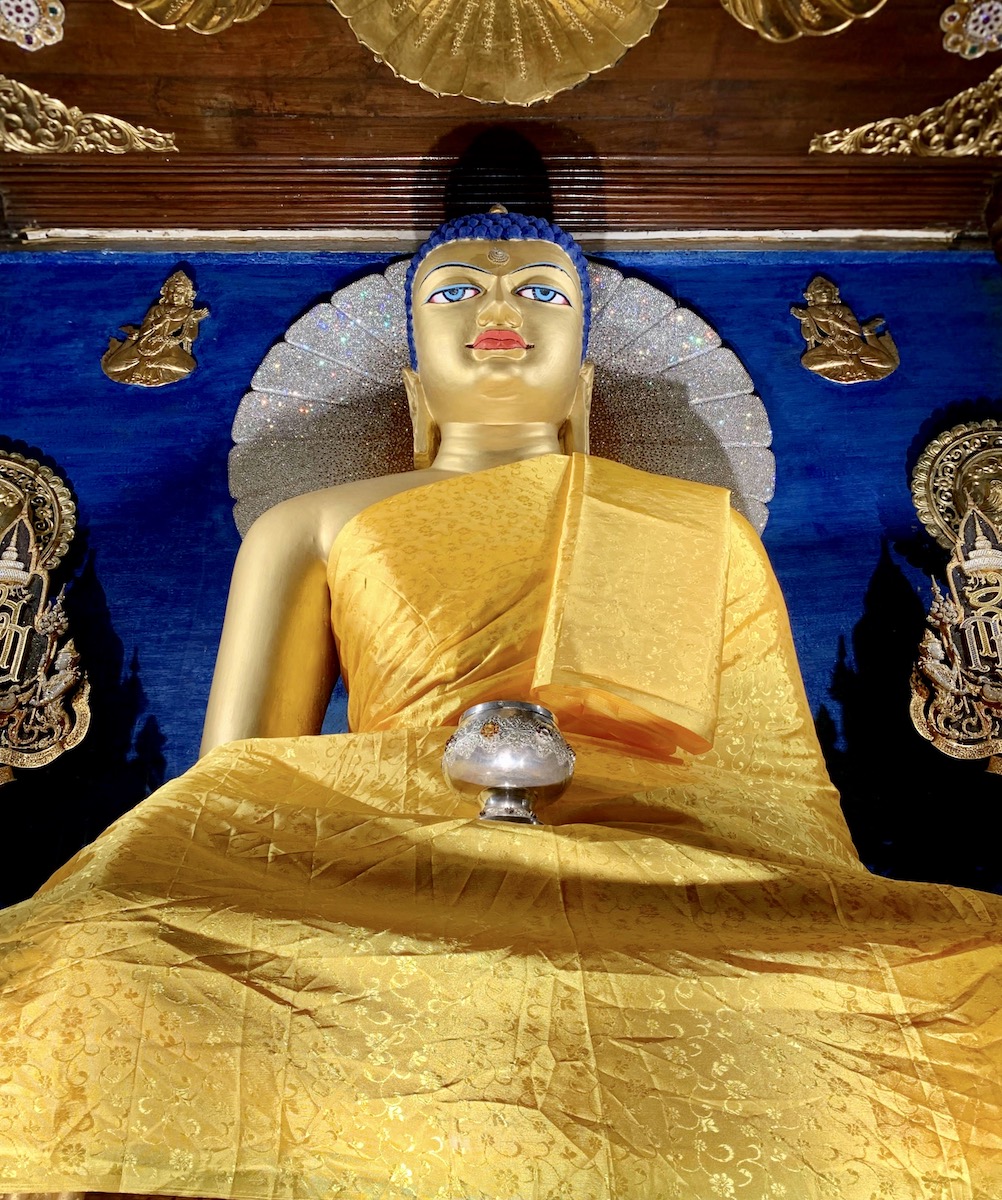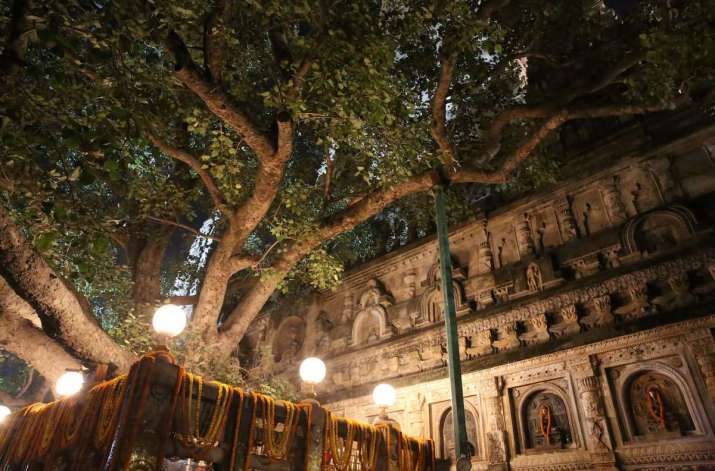NEWS
UPDATE: Lighting the Mahabodhi Project Draws Closer to Completion
 Lighting the Mahabodhi. Image courtesy of Siddartha’s Intent India
Lighting the Mahabodhi. Image courtesy of Siddartha’s Intent IndiaSiddartha’s Intent India, founded by the renowned Bhutanese lama, filmmaker, and author Dzongsar Jamyang Khyentse Rinpoche, has offered a new update on its ambitious initiative to illuminate the sacred Mahabodhi Temple in Bodh Gaya, India, reporting that after achieving its full funding target earlier this year, the project is now 90 per cent complete, despite delays caused by pandemic-related lockdowns and restrictions.
The sacred endeavor, dubbed “Lighting the Mahabodhi,” undertaken with funding offered by Siddhartha’s Intent India and with support from Khyentse Foundation and Vana Foundation, is perhaps the most ambitious Buddhist light-offering ever. The objective is to overhaul the temple complex’s aged lighting and electrical systems to create what may be the largest and longest-lasting Buddhist light-offering in history. Dzongsar Khyentse Rinpoche proposed the undertaking in 2015, and in 2017 received approval from the Bodh Gaya Temple Management Committee (BTMC) and the Gaya District Magistrate. The project was officially launched on 26 March last year.
Despite delays to upgrade work at the temple complex due to the impact of the COVID-19 pandemic, Siddartha’s Intent India expressed confidence about the project’s imminent completion.
“After three years of development, planning, and design, the project kicked off on the ground in early 2019. Today—even after eight months of pandemic lockdown in 2020—we have reached 90 per cent completion,” Prashant V., projects director for Siddhartha’s Intent India, told Buddhistdoor Global. “We expect to finish and hand over this project by May/June 2021, with a further plan to maintain the site for the next two years.”

Statue of Shakyamuni Buddha inside the Mahabodhi.
Image courtesy of Siddartha’s Intent India
The Mahabodhi Temple, perhaps the most sacred of all pilgrimage sites for Buddhist practitioners, is a UNESCO World Heritage Site marking the place where the historical Buddha is said to have attained awakening. There are seven other sacred sites in Bodh Gaya, Bihar, where the Buddha contemplated enlightenment, including the descendent of the original Bodhi tree beneath which Shakyamuni Buddha sat.
“Not only have we aesthetically created an atmosphere of balance, harmony, and elegance in illuminating the complex, but we have also upgraded the entire electrical distribution system with robust, state-of-art 21st century technology—100 per cent of the lighting is LED-based, and the design is also sensitive to night sky pollution and light trespass,” said Prashant. “A state-of-the-art sound reinforcement system by Bose has also been installed for prayers and chanting, adding another dimension to the devotees’ spiritual experience.”
Siddhartha’s Intent, first formed in Australia in 1986, is now an international collective of Buddhist groups supporting Dzongsar Khyentse Rinpoche’s Buddhadharma activities by organizing teachings and retreats, distributing and archiving recorded teachings, and transcribing, editing, and translating manuscripts and practice texts. Khyentse Foundation was established by Rinpoche in 2001 with the aim of promoting the Buddha’s teaching and supporting all traditions of Buddhist study and practice. The foundation’s activities include major text preservation and translation projects, support for monastic colleges in Asia, a worldwide scholarship and awards program, the development of Buddhist studies at major universities, training and development for Buddhist teachers, and developing new modes of Dharma-inspired education for children. Vana Foundation states that its vision “is to revive Indian wisdom in contemporary India,” with a focus on Indian wisdom, Indian farming, and Indian culture, with an aspiration through its initiatives and activities to benefit all, especially India and its youth.
“We have already installed roughly 1,000 lights and laid more than 18,000 meters of electrical cables, Prahsant explained. “The results have been hugely well received, not only by the media, but also devotees and trustees. After a tour of the facility, a trustee of the BTMC told us: ‘Divinity at its splendid best. This is truly despair giving way to hope and illumination!’”
The new lighting system will ultimately be owned by the temple Committee. As well as highlighting the magnificence of the sacred main temple and places of worship, the upgrades will improve the safety and comfort of Buddhist pilgrims and has been designed to be adaptable to the specific special needs of the Mahabodhi Temple and the rituals and ceremonies conducted there.
“In this dark and bleak time, I want to thank everyone who has given time, money, ideas, rejoicing, and well wishes to this Mahabodhi lighting project, which is very well under way and will come to fruition soon,” said Dzongsar Khytentse Rinpoche. “I have not the slightest doubt that we will soon celebrate overcoming this present darkness by coming together in the very near future under the Bodhi tree where the four mighty ones realized the truth, where 996 more will realize the truth, and where we—those who are connected to this tree—will also realize the truth above this very vajrasana.” (Khyentse Foundation)
 Beneath the Bodhi Tree. From lightingthemahabodhi.in
Beneath the Bodhi Tree. From lightingthemahabodhi.inBorn in Bhutan in 1961, and now based in Himachal Pradesh, India, Dzongsar Khyentse Rinpoche is the son of Thinley Norbu Rinpoche and was a close student of the Nyingma master Dilgo Khyentse Rinpoche (1910–91). He is recognized as the third incarnation of Jamyang Khyentse Wangpo, founder of the Khyentse lineage, and the immediate incarnation of Jamyang Khyentse Chökyi Lodrö (1893–1959). In addition to Siddhartha’s Intent and Khyentse Foundation, his projects include 84000, a non-profit global initiative to translate the words of the Buddha and make them available to all; Lotus Outreach, which directs a wide range of projects to help refugees; and more recently The Lhomon Society, which promotes sustainable development in Bhutan through education.
Rinpoche is the author of several books, including: What Makes You Not a Buddhist (2006), Not For Happiness (2012), and The Guru Drinks Bourbon? (2016), and has garnered renown within and outside of the global Buddhist community for the feature-length films he has written and directed: The Cup (1999), Travellers and Magicians (2004), Vara: A Blessing (2012), and Hema Hema: Sing Me a Song While I wait (2016).
See more
Lighting the Mahabodhi
Siddhartha’s Intent India
Siddhartha's Intent
Khyentse Foundation
Vana Foundation
Related news from Buddhistdoor Global
Lighting the Mahabodhi Project Reaches Funding Target, Khyentse Foundation Says
Khyentse Foundation Updates on Progress of “Lighting the Mahabodhi”
Bodh Gaya’s Mahabodhi Temple to Receive New Hi-tech Illumination System
Related features from Buddhistdoor Global
On Being Brave: Dzongsar Khyentse Rinpoche on Technology and the Dissemination of the Dharma
A Buddhist Vision for Education Reform: The Blue Lion Preschool, Inspired by Dzongsar Khyentse Rinpoche
Seeing the Sacred: an Interview with Pawo Choyning Dorji, Producer of Hema Hema: Sing Me A Song While I Wait














